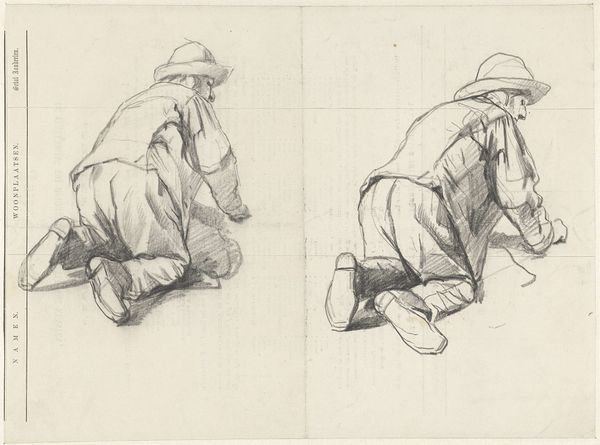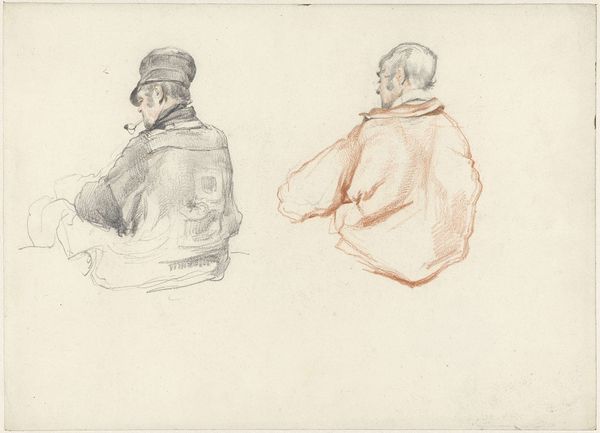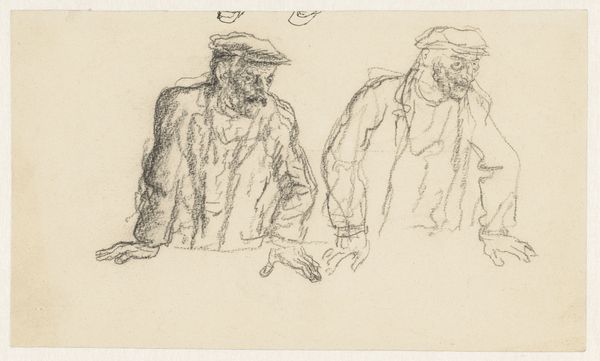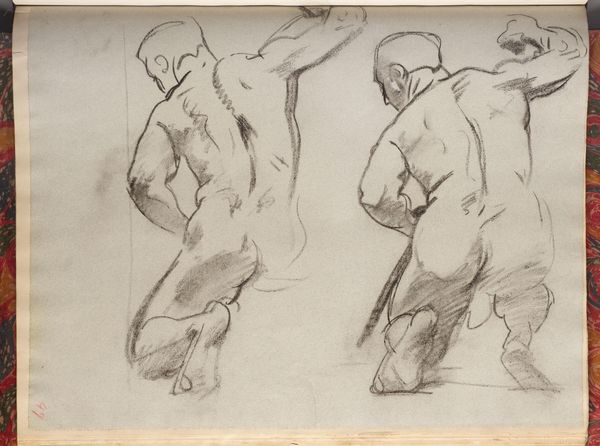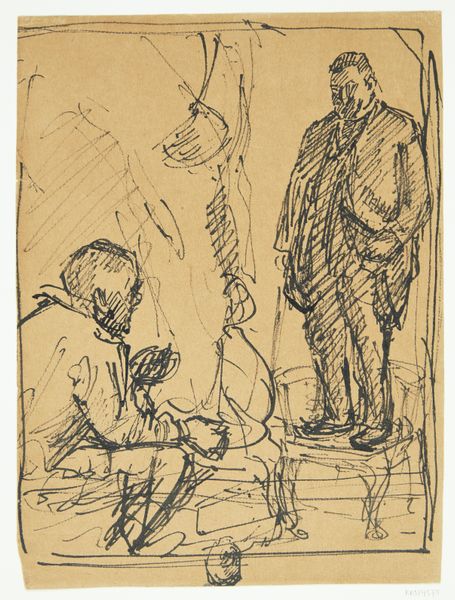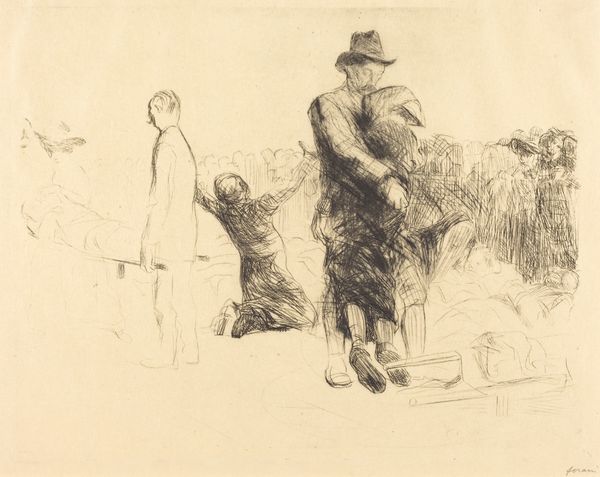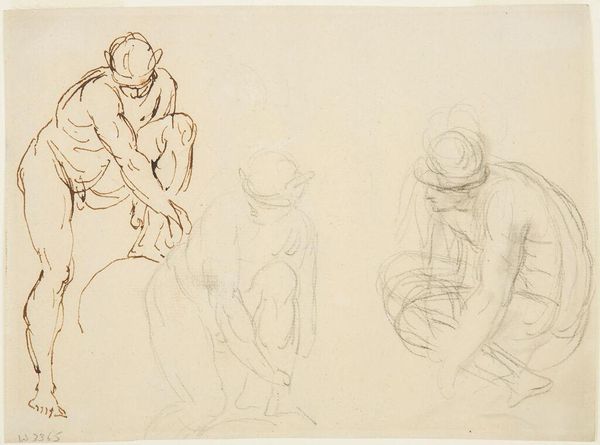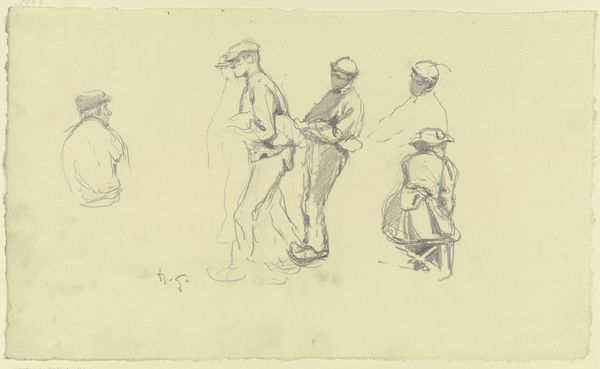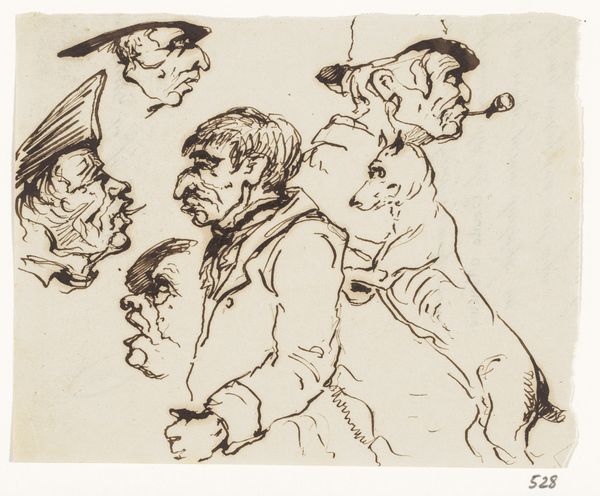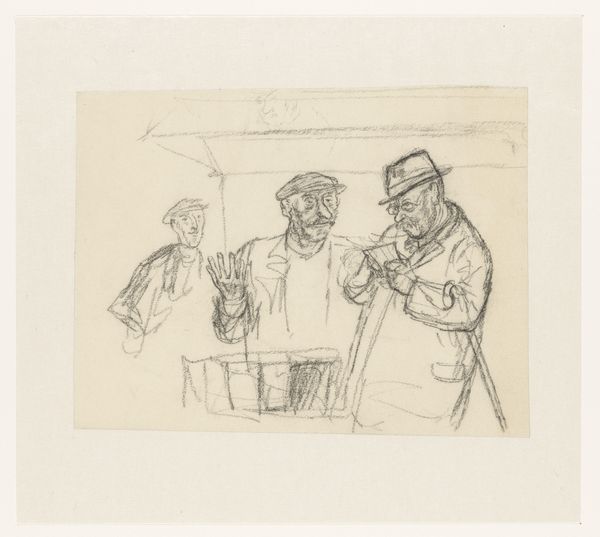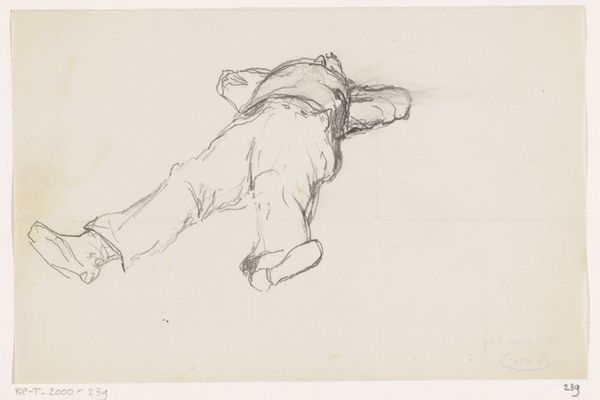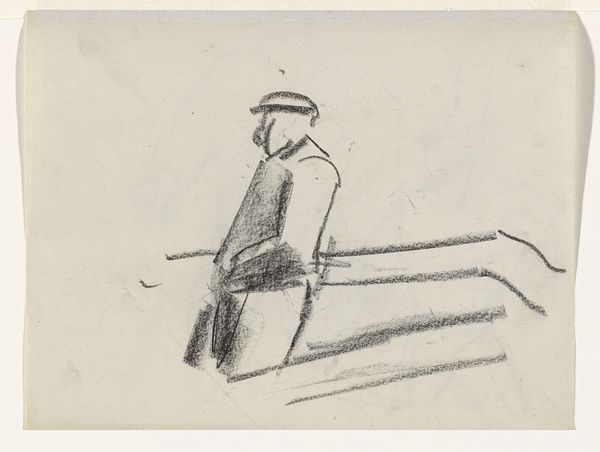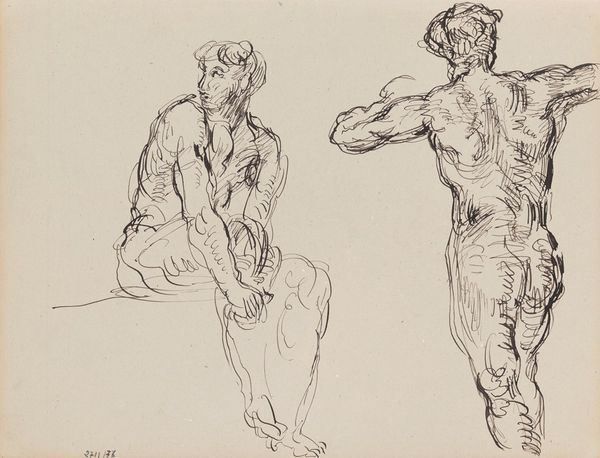
Dimensions: height 117 mm, width 187 mm
Copyright: Rijks Museum: Open Domain
Curator: This drawing, dating from 1840-1880, is entitled "Standing and Sitting Man" and it’s the work of Johannes Tavenraat. You can currently find it here at the Rijksmuseum. Editor: There’s something melancholy about this work; the figures are withdrawn. Is it merely the use of ink that lends it this rather somber mood? Curator: I think we need to consider the figures' place within broader societal dynamics, perhaps the impact of industrialization on everyday life, evident in their poses, detached from the traditional settings one might expect in Romantic art. Editor: It's the hat worn by the standing man that interests me. While faceless, the artist focuses the clothing; is it conveying something to you? Curator: Most likely. Dress has always served as a marker of identity, class, even resistance. Are they subjects caught in a transitional moment? Notice, however, the seated man. While resting, his gaze remains fixed. Is he simply tired? Or is he watching, waiting, perhaps resisting some unmentioned power dynamic? Editor: There’s definitely a tension despite their static poses. You mention resistance, do you find their portrayal suggests anything in regards to social or political reform during the period it was created? Curator: These men could be understood as metaphors for the displaced individual navigating changing landscapes of power, where visibility and invisibility, silence and speech, became forms of resistance and assertion. Editor: It brings me to consider archetypes of the time. One stands holding a walking stick, which seems representative of direction and guidance. And in opposition the other has become horizontal; is there any connection, whether physical or psychological between the two men? Curator: Possibly. Remember these works are situated in a moment of immense societal shift, where gendered and racial norms were being challenged, the work suggests something regarding ideas of change. I would be curious to see where those connections are more thoroughly placed in the contemporary moment. Editor: Thank you. I now view this work and those potential archetypes through a completely new lens!
Comments
No comments
Be the first to comment and join the conversation on the ultimate creative platform.
